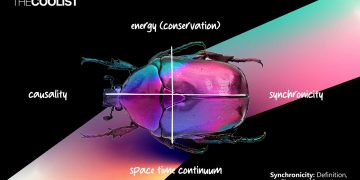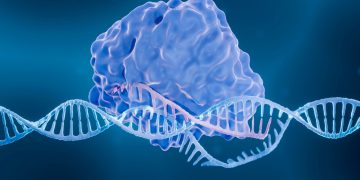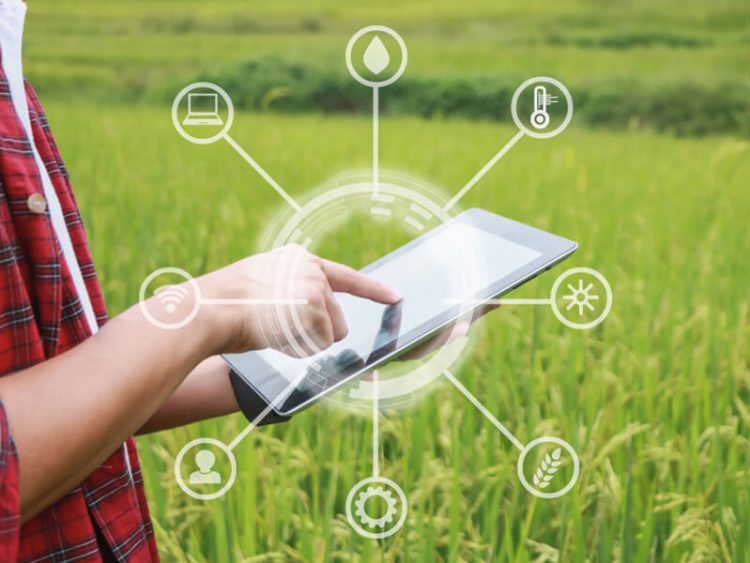Introduction: The Rise of Organic Food and the Need for Innovation
Over the last few decades, there has been a significant shift in consumer preferences towards organic food. Organic products, known for being free from synthetic pesticides, herbicides, and genetically modified organisms (GMOs), have gained widespread popularity among health-conscious consumers. The global organic food market has grown considerably, driven by increasing awareness of health, environmental sustainability, and food safety concerns. However, despite its growing popularity, organic food remains expensive, limiting its accessibility to a broader population.
In parallel, agricultural technology, especially artificial intelligence (AI), is transforming farming practices. AI-driven solutions are helping farmers increase yields, reduce waste, and optimize resource use. These advancements have the potential to make farming more sustainable and efficient, but can AI also make organic food more affordable and accessible to the general population?
This article explores how AI-driven agricultural technology could bridge the gap between the growing demand for organic food and its high cost, making it a more widely accessible and affordable option for everyday consumers.
The Current Challenges Facing Organic Farming
- High Production Costs Organic farming is known for its high labor costs, smaller yields, and the need for more complex farming practices compared to conventional agriculture. Without the use of synthetic chemicals, organic farmers must rely on natural pest control, crop rotation, and composting, which require more labor and expertise. These methods, while beneficial for the environment and human health, are generally less efficient and yield smaller quantities, driving up the price of organic produce.
- Limited Access to Technology Small-scale organic farmers often lack access to cutting-edge technology, which limits their ability to optimize their operations. Unlike large-scale industrial farms, which can invest in the latest technologies, smaller organic farms may find it difficult to adopt innovations that could improve their productivity and reduce costs. This lack of access to technology creates a barrier to scaling organic farming practices and expanding supply.
- Supply Chain Limitations Organic food production requires careful handling and specialized logistics due to the absence of preservatives and the increased risk of contamination from non-organic products. The supply chain for organic food is often fragmented and less efficient, leading to higher distribution costs and limited availability in certain areas. The lack of an efficient and scalable organic food supply chain further exacerbates the price disparity between organic and conventional food.
AI-Driven Agricultural Technology: Transforming Organic Farming
Artificial intelligence has the potential to revolutionize agriculture by improving efficiency, reducing costs, and minimizing waste. The application of AI in farming is already proving transformative in several ways, and its integration into organic farming practices could help make organic food more affordable and accessible.
Here are some ways AI can help improve organic farming:
- Precision Farming One of the key innovations in AI-driven agriculture is precision farming, which uses data analytics and machine learning to optimize the use of resources such as water, nutrients, and land. AI systems can analyze soil conditions, weather patterns, and crop health to determine the precise amount of water, fertilizer, or pesticide required for each specific area of the farm. This minimizes waste, improves crop yields, and reduces the labor-intensive nature of organic farming. For example, AI-powered drones and sensors can monitor crop health and detect pests early, allowing farmers to implement targeted treatments rather than relying on broad-spectrum chemicals. This can help organic farmers maintain healthy crops without the use of synthetic pesticides, while also reducing labor costs associated with manual inspections.
- Automated Pest and Weed Management AI technologies can enhance pest and weed management practices in organic farming, areas that typically require significant effort and expertise. Traditional organic methods of pest and weed control, such as crop rotation and manual weeding, can be time-consuming and inefficient. However, AI-powered systems, such as robotic weeders and autonomous pest detection systems, can replace manual labor by precisely targeting weeds and pests.
- Example: Companies like Octinion, with its Rubion robot, use AI to help weed out unwanted plants without the use of herbicides. These robots are designed to precisely identify and remove weeds in organic farms, significantly reducing labor costs and the need for manual intervention.
- Data-Driven Decision Making AI systems can collect and analyze vast amounts of data from farms, including weather forecasts, soil health, and crop performance. By utilizing predictive analytics, AI can help farmers make informed decisions about planting, harvesting, and resource allocation. This can lead to optimized crop yields and more efficient use of land and water—key factors in reducing the cost of organic farming.
- Example: IBM’s Watson Decision Platform for Agriculture integrates AI, machine learning, and IoT (Internet of Things) to provide farmers with real-time insights. By utilizing this platform, organic farmers can optimize their planting schedules and make data-driven decisions to improve productivity while minimizing costs.
- Supply Chain Optimization AI can also play a significant role in improving the efficiency of the organic food supply chain. By using AI to predict demand, manage inventory, and optimize transportation routes, organic food producers can reduce waste and streamline their distribution systems. More efficient supply chains can lower the costs of organic food, making it more accessible to consumers. AI-driven logistics solutions can ensure that organic produce is distributed more effectively, minimizing spoilage and waste. This can also reduce the overall carbon footprint of organic food production and transportation, contributing to both environmental sustainability and cost reduction.
- Improved Yield Prediction One of the biggest challenges in organic farming is predicting and managing crop yields. Since organic farming often involves natural methods that can be affected by weather patterns and pest invasions, it can be difficult to forecast exactly how much produce will be available at harvest time. AI technologies, such as machine learning algorithms, can analyze past weather data, soil conditions, and crop health to predict yields more accurately. With more reliable yield predictions, organic farmers can plan their harvests more efficiently, reduce waste, and align production with market demand. This can lead to more consistent supply and pricing, helping organic food become a more stable and accessible option for consumers.

The Role of AI in Reducing Costs and Increasing Accessibility
AI-driven technologies are key to reducing the production costs associated with organic farming. By increasing efficiency in resource use, automating labor-intensive tasks, and optimizing the supply chain, AI can help make organic food production more scalable and cost-effective.
As a result, the price of organic products could decrease, making them more accessible to a wider range of consumers. Organic food could eventually become a daily choice for many, not just a premium, niche option. This would contribute to healthier eating habits on a broader scale, as consumers would have more access to food that is free from harmful chemicals, GMOs, and synthetic additives.
Furthermore, AI technologies can support small-scale organic farmers, enabling them to compete with larger agricultural operations by leveling the technological playing field. This democratization of technology could empower more farmers to adopt organic practices and contribute to a larger supply of organic food.
Challenges and Considerations
Despite the promising potential of AI in organic farming, several challenges remain:
- High Initial Investment Implementing AI-driven technologies often requires significant upfront investment. Small-scale farmers may struggle to afford the technology needed to optimize their operations. Governments, NGOs, and private investors will need to play a role in providing subsidies or financing options to help these farmers adopt AI solutions.
- Training and Education Farmers must be trained to use AI systems effectively. While AI technologies are becoming more user-friendly, there is still a learning curve involved in adopting new technologies. Education and training programs will be essential to ensure that farmers can make the most of AI-driven solutions.
- Data Privacy and Security The integration of AI into farming involves the collection and analysis of large amounts of data, which raises concerns about data privacy and security. Ensuring that farmers’ data is protected and used responsibly will be crucial for the widespread adoption of AI technologies.
Conclusion: A Sustainable Future for Organic Food
AI-driven agricultural technology holds immense potential to make organic food more affordable and accessible. By optimizing farming practices, improving supply chain management, and automating labor-intensive tasks, AI can help reduce the costs associated with organic food production. As a result, organic food could become a more common choice for consumers, contributing to a healthier and more sustainable food system.
However, overcoming the challenges of high initial investment, training, and data privacy concerns will require a collective effort from governments, industry leaders, and stakeholders across the agricultural sector. If these obstacles can be addressed, AI has the power to transform organic farming from a niche market into a widespread, everyday choice for consumers, benefiting both human health and the planet.
















































Discussion about this post